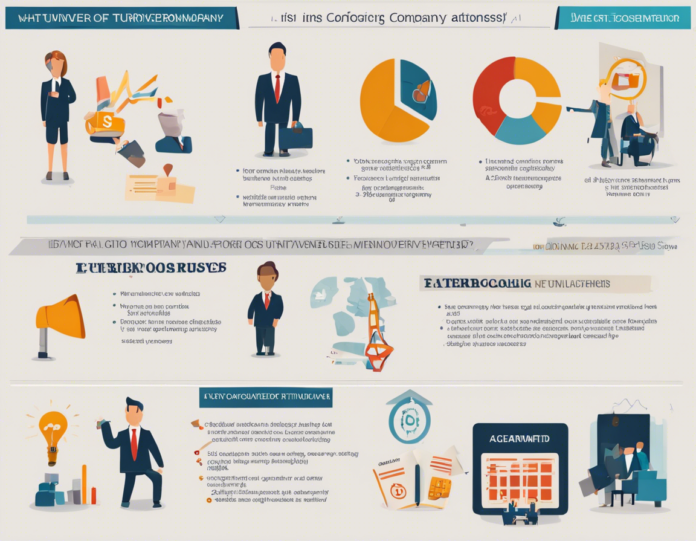Introduction
Employee turnover is a critical metric that impacts the overall health and success of an organization. Company turnover refers to the rate at which employees leave a company over a certain period. High turnover can indicate underlying issues within the organization, such as poor leadership, lack of growth opportunities, or an unsatisfactory work environment. Understanding company turnover is essential for HR professionals, managers, and business owners to devise effective strategies for employee retention and engagement.
Factors Contributing to Company Turnover
1. Lack of Career Development Opportunities
Employees are more likely to leave a company if they feel their career progression is stagnant. Providing career development opportunities such as training programs, mentorship, and internal promotions can help reduce turnover rates.
2. Poor Leadership
Inadequate leadership can lead to low employee morale and dissatisfaction. Effective leadership is crucial for creating a positive work environment and fostering employee engagement.
3. Uncompetitive Compensation
Employees often leave companies in search of better compensation packages. Conducting regular salary reviews and offering competitive pay can help retain talent.
4. Work-Life Balance
A poor work-life balance can lead to burnout and dissatisfaction among employees. Encouraging work-life balance through flexible work arrangements can improve employee retention.
5. Company Culture
A toxic or negative company culture can drive employees away. Fostering a positive work culture based on trust, respect, and open communication is essential for retaining top talent.
Measuring Company Turnover
1. Turnover Rate
The turnover rate is calculated by dividing the number of employees who left the company by the average number of employees during a specific period, typically one year. A high turnover rate indicates instability within the organization.
2. Voluntary vs. Involuntary Turnover
It is crucial to differentiate between voluntary turnover, where employees leave the company willingly, and involuntary turnover, where employees are terminated. Understanding the reasons behind both types of turnover is essential for strategic workforce planning.
3. Cost of Turnover
Calculating the cost of turnover involves considering recruitment expenses, training costs for new hires, and lost productivity during the transition period. High turnover can significantly impact a company's bottom line.
Strategies to Reduce Company Turnover
1. Improve Hiring Practices
Implementing rigorous hiring practices to ensure the right fit for the organization can reduce turnover rates. Conducting thorough interviews and assessments can help identify candidates who align with the company culture and values.
2. Employee Engagement
Engaged employees are more likely to stay with a company. Investing in employee engagement initiatives such as recognition programs, feedback mechanisms, and career development opportunities can increase job satisfaction and retention.
3. Performance Management
Providing regular feedback and performance evaluations can help employees understand their roles and expectations. Clear performance goals and constructive feedback can motivate employees to perform better and stay with the company.
4. Compensation and Benefits
Offering competitive compensation and benefits packages is crucial for retaining top talent. Conducting salary reviews, providing healthcare benefits, and offering performance-based bonuses can help improve employee retention.
5. Training and Development
Investing in training and development programs can enhance employee skills and knowledge, fostering career growth and loyalty to the organization.
FAQs (Frequently Asked Questions)
1. What is a healthy turnover rate for a company?
A healthy turnover rate typically falls between 10%-15% annually. However, the ideal rate can vary depending on industry norms and company size.
2. How can I identify the root cause of high turnover in my company?
Conducting exit interviews, analyzing employee feedback, and tracking turnover trends can help identify underlying issues contributing to high turnover rates.
3. Is turnover always a negative indicator for a company?
While high turnover can indicate problems within the organization, a certain level of turnover is natural and can lead to fresh perspectives and new talent infusion.
4. How can I calculate the cost of turnover for my company?
To calculate the cost of turnover, consider recruitment expenses, training costs, lost productivity, and the time it takes for new hires to reach full productivity.
5. What role does leadership play in reducing turnover rates?
Effective leadership is crucial in creating a positive work environment, fostering employee engagement, and building trust within the organization. Strong leadership can help reduce turnover rates by addressing employee concerns and promoting growth opportunities.
Conclusion
Understanding company turnover is vital for organizations looking to attract and retain top talent. By identifying the factors contributing to turnover, measuring turnover rates, and implementing effective strategies for retention, companies can create a positive work environment that fosters employee engagement and loyalty. Continuously evaluating turnover metrics and addressing underlying issues can help organizations build a strong and resilient workforce.


Recent comments